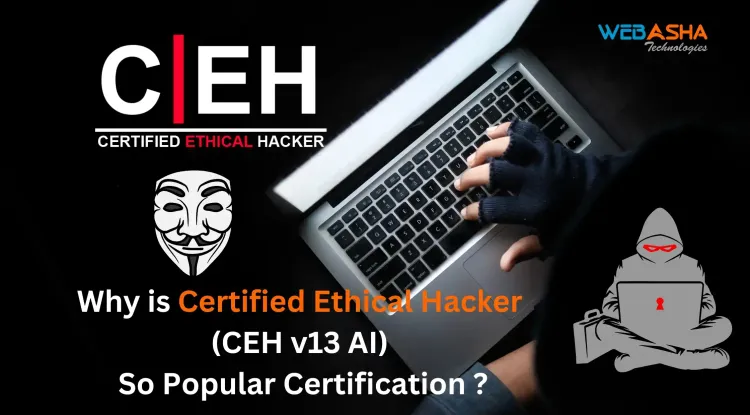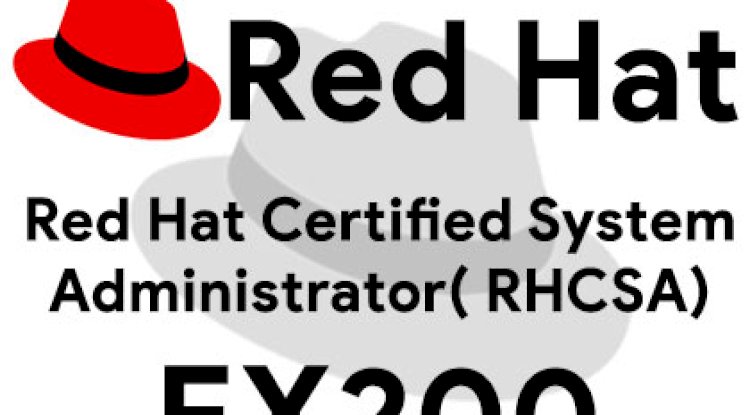How to Detect and Prevent BlackEye Phishing | The Ultimate Guide to Online Safety
BlackEye Phishing is a highly advanced phishing tool used by cybercriminals to create fake login pages for popular websites, tricking users into revealing their credentials. Unlike traditional phishing methods, BlackEye phishing is more sophisticated, making it difficult for victims to recognize the fraudulent sites. To detect BlackEye phishing, users should check the URL for inconsistencies, look for unusual visual elements, hover over links to verify their destinations, and be cautious of urgent messages requesting immediate action. Websites that ask for excessive personal information or lack security features like SSL certificates should be considered suspicious. To prevent BlackEye phishing, individuals and organizations can implement two-factor authentication (2FA), use anti-phishing software, update their passwords regularly, and educate themselves about phishing tactics. Verifying suspicious emails and avoiding clicking on unknown links are crucial steps in staying safe. Keepi

Table of Contents
- What is BlackEye Phishing?
- How Does BlackEye Phishing Work?
- Best Ways to Detect BlackEye Phishing
- Best Ways to Prevent BlackEye Phishing
- Conclusion
- FAQ's
In today's digital world, phishing attacks have become a common threat to individuals and organizations alike. Among the various phishing tools used by cybercriminals, BlackEye Phishing has emerged as one of the most advanced and effective methods. As its popularity grows, it becomes increasingly crucial to understand how to detect and prevent these types of attacks. This blog will explore the best ways to identify and protect yourself from BlackEye Phishing, ensuring that your personal information and online security remain safe.
What is BlackEye Phishing?
Before delving into detection and prevention methods, it's important to understand what BlackEye phishing is. BlackEye is an advanced phishing tool used by cybercriminals to create fake login pages of popular websites like Facebook, Instagram, Twitter, and more. These fake pages are designed to trick users into entering their credentials, which are then harvested by attackers.
Unlike traditional phishing attacks, BlackEye phishing uses a much more sophisticated and realistic approach, mimicking the look and feel of legitimate websites. These phishing pages are often hard to distinguish from the real ones, making it essential for individuals to adopt a proactive approach to protect themselves.
How Does BlackEye Phishing Work?
BlackEye phishing works by creating a deceptive page that closely resembles the login page of a well-known website. Once the victim enters their credentials, the information is sent directly to the attacker. Hackers can use this stolen information to access the victim's account, steal sensitive data, or even carry out identity theft.
In addition to using fake login pages, BlackEye phishing often involves social engineering tactics, such as sending fake emails or messages that create a sense of urgency or curiosity. These messages often include links to the fake login page, making it easy for victims to fall into the trap.
Best Ways to Detect BlackEye Phishing
Detecting BlackEye phishing can be challenging due to the sophisticated nature of the attack. However, by paying attention to certain signs and employing caution, you can identify phishing attempts and protect yourself from falling victim.
1. Check the URL
One of the easiest ways to detect BlackEye phishing is by checking the website's URL. Legitimate websites have secure URLs that start with "https://" and usually include the correct domain name. If the URL looks suspicious or contains slight variations (e.g., "facebook-com" instead of "facebook.com"), it's likely a phishing attempt.
2. Look for Inconsistent Visual Elements
Even though BlackEye phishing pages are designed to resemble real websites, they may still contain minor visual inconsistencies. Pay attention to the page layout, fonts, logos, and color schemes. If something looks off, it could be a phishing site.
3. Hover Over Links
Before clicking on any link, hover over it with your mouse. This will display the full URL destination in the status bar at the bottom of the browser. If the link redirects to a suspicious or unfamiliar domain, avoid clicking on it.
4. Be Wary of Urgent Messages
Phishing attempts often come with messages that create a sense of urgency or fear. For example, a phishing email might claim that your account is at risk and ask you to log in immediately. Legitimate companies will never ask you to take immediate action through email or text messages. Always verify such claims directly with the company through their official channels.
5. Look for Unusual Requests
Phishing sites often ask for sensitive information that legitimate websites typically don’t request, such as your social security number or credit card details. If a website asks for too much personal information, especially after you’ve logged in, it could be a phishing attempt.
6. Check the Website's Security Features
Most reputable websites will have certain security features, such as SSL certificates (indicated by a padlock symbol next to the URL). If the website you're visiting lacks these features, or if the page doesn’t load securely, it could be a phishing attempt.
Best Ways to Prevent BlackEye Phishing
Now that we know how to detect BlackEye phishing, let's explore the best ways to prevent it from happening in the first place. By following these preventative measures, you can significantly reduce the risk of falling victim to phishing attacks.
1. Use Two-Factor Authentication (2FA)
Enabling two-factor authentication (2FA) on your accounts adds an extra layer of security. Even if a hacker obtains your credentials through a phishing attack, they would still need access to the second factor (such as your phone) to log in to your account.
2. Install Anti-Phishing Software
Many cybersecurity tools offer anti-phishing features that can help detect phishing websites in real-time. These tools can alert you when you’re visiting a suspicious page, preventing you from entering your credentials on a fake site.
3. Regularly Update Passwords
It’s essential to regularly update your passwords and avoid reusing them across multiple sites. If a hacker gains access to one of your accounts through a phishing attack, using unique passwords for each site ensures that other accounts remain secure.
4. Educate Yourself and Others
One of the best ways to protect against BlackEye phishing is by educating yourself and others about the risks and tactics involved. Regularly learning about new phishing techniques and sharing this information with friends and colleagues can help create a safer online environment.
5. Verify Suspicious Emails or Messages
If you receive an email or message that seems suspicious or contains a link to a login page, always verify it before clicking. Contact the organization directly using official contact details to confirm the authenticity of the message.
6. Avoid Clicking on Suspicious Links
Be cautious when clicking on links, especially if they are sent through email, text messages, or social media. Instead of clicking directly on a link, type the web address into your browser to ensure you are visiting the official site.
7. Keep Your Software and Devices Updated
Ensure that your operating system, browser, and security software are always up to date. Security patches and updates can fix vulnerabilities that hackers might exploit to carry out phishing attacks.
Conclusion
BlackEye phishing is a sophisticated and potentially damaging form of cybercrime. However, by staying vigilant and following the best practices outlined above, you can significantly reduce the risk of falling victim to these attacks. Detecting and preventing BlackEye phishing requires awareness, caution, and the use of security tools like 2FA and anti-phishing software. By implementing these strategies, you can protect your personal information and enjoy a safer online experience.
FAQ's
What is BlackEye phishing?
BlackEye phishing is an advanced phishing tool that creates fake login pages for popular websites to trick users into revealing their login credentials.
How can I identify a BlackEye phishing site?
You can identify BlackEye phishing sites by checking the URL, looking for visual inconsistencies, hovering over links, and checking for unusual requests for personal information.
What are the risks of BlackEye phishing?
BlackEye phishing poses significant risks, such as identity theft, unauthorized account access, financial loss, and the exposure of sensitive personal data.
How does BlackEye phishing work?
BlackEye phishing works by creating deceptive fake login pages that collect user credentials when entered. These credentials are then sent to attackers who use them to compromise accounts.
Can BlackEye phishing be prevented?
Yes, BlackEye phishing can be prevented by using two-factor authentication (2FA), installing anti-phishing software, avoiding suspicious links, and educating yourself on phishing tactics.
What is two-factor authentication (2FA)?
Two-factor authentication (2FA) is an added security layer that requires users to provide two forms of identification before gaining access to an account, making it harder for attackers to exploit stolen credentials.
Is BlackEye phishing only used for stealing login credentials?
While stealing login credentials is the primary goal, BlackEye phishing can also be used to gain access to sensitive personal information, financial data, and private communications.
Are phishing attacks becoming more advanced?
Yes, phishing attacks like BlackEye are evolving to be more sophisticated, making them harder to detect and increasing the need for vigilant cybersecurity practices.
How can I protect my personal data from BlackEye phishing?
You can protect your personal data by using strong passwords, enabling 2FA, regularly updating your passwords, and being cautious when interacting with suspicious emails or messages.
What should I do if I suspect a phishing attack?
If you suspect a phishing attack, stop entering your information immediately, report the site or message to the relevant authorities, and take steps to secure your accounts by changing passwords and enabling 2FA.












![Top 10 Ethical Hackers in the World [2025]](https://www.webasha.com/blog/uploads/images/202408/image_100x75_66c2f983c207b.webp)

![[2025] Top 100+ VAPT Interview Questions and Answers](https://www.webasha.com/blog/uploads/images/image_100x75_6512b1e4b64f7.jpg)









